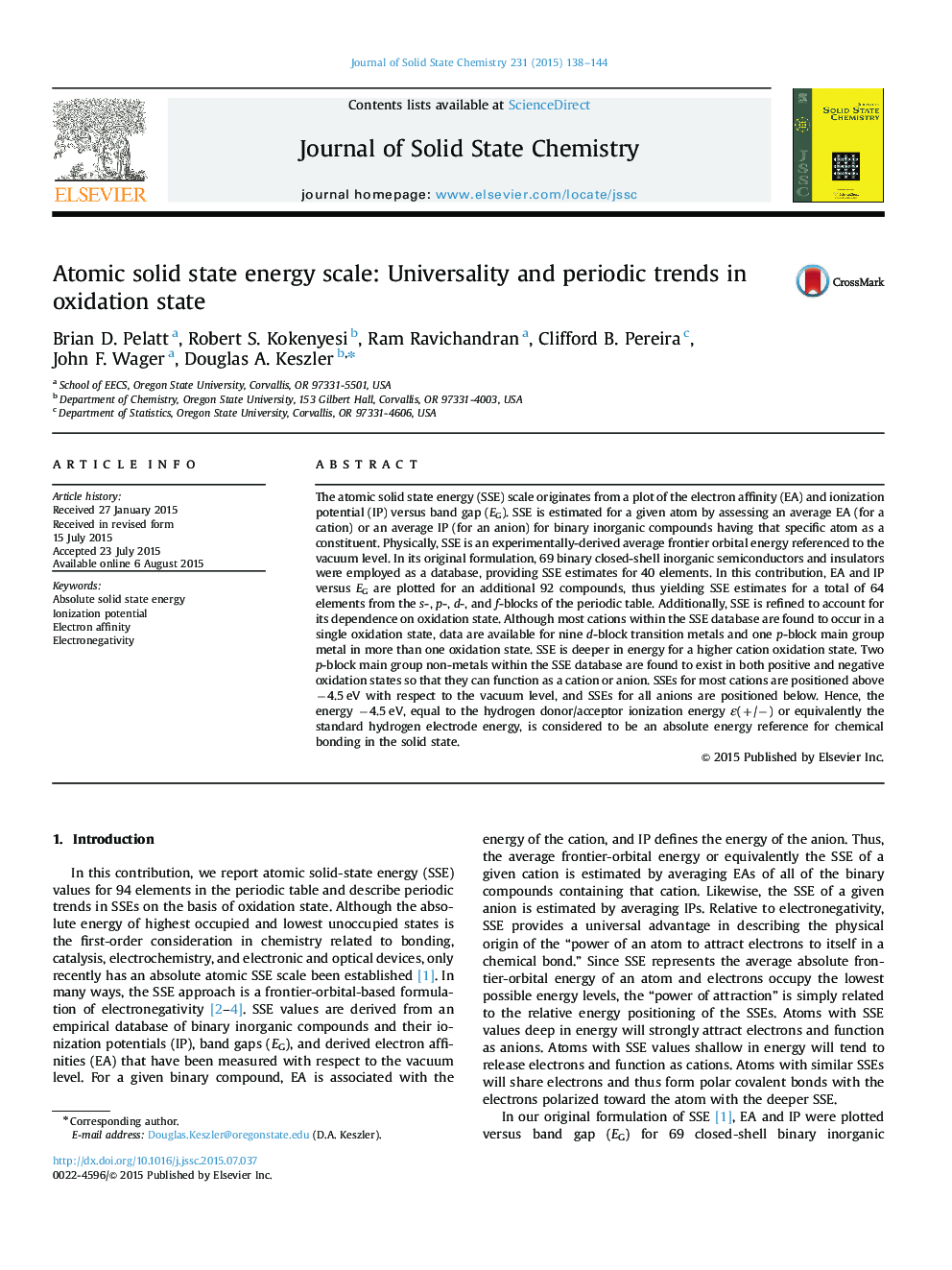| کد مقاله | کد نشریه | سال انتشار | مقاله انگلیسی | نسخه تمام متن |
|---|---|---|---|---|
| 1329524 | 1500085 | 2015 | 7 صفحه PDF | دانلود رایگان |
• Atomic solid-state energies are estimated for 64 elements from experimental data.
• The relationship between atomic SSEs and oxidation state is assessed.
• Cations are positioned above and absolute energy of −4.5 eV and anions below.
The atomic solid state energy (SSE) scale originates from a plot of the electron affinity (EA) and ionization potential (IP) versus band gap (EG). SSE is estimated for a given atom by assessing an average EA (for a cation) or an average IP (for an anion) for binary inorganic compounds having that specific atom as a constituent. Physically, SSE is an experimentally-derived average frontier orbital energy referenced to the vacuum level. In its original formulation, 69 binary closed-shell inorganic semiconductors and insulators were employed as a database, providing SSE estimates for 40 elements. In this contribution, EA and IP versus EG are plotted for an additional 92 compounds, thus yielding SSE estimates for a total of 64 elements from the s-, p-, d-, and f-blocks of the periodic table. Additionally, SSE is refined to account for its dependence on oxidation state. Although most cations within the SSE database are found to occur in a single oxidation state, data are available for nine d-block transition metals and one p-block main group metal in more than one oxidation state. SSE is deeper in energy for a higher cation oxidation state. Two p-block main group non-metals within the SSE database are found to exist in both positive and negative oxidation states so that they can function as a cation or anion. SSEs for most cations are positioned above −4.5 eV with respect to the vacuum level, and SSEs for all anions are positioned below. Hence, the energy −4.5 eV, equal to the hydrogen donor/acceptor ionization energy ε(+/−) or equivalently the standard hydrogen electrode energy, is considered to be an absolute energy reference for chemical bonding in the solid state.
Figure optionsDownload as PowerPoint slide
Journal: Journal of Solid State Chemistry - Volume 231, November 2015, Pages 138–144
